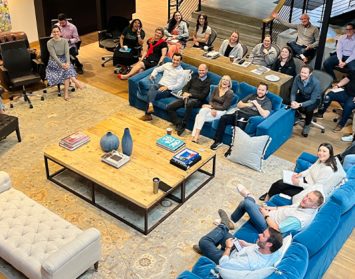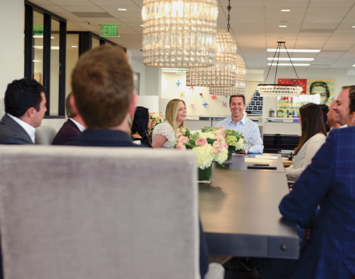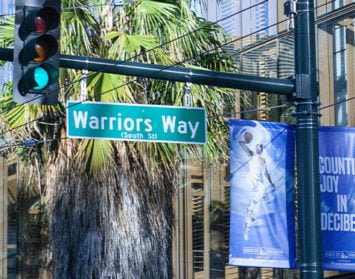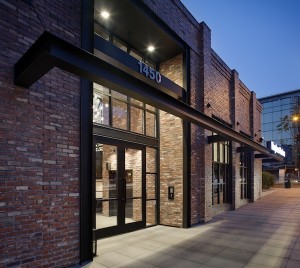 Productivity isn’t all that it’s cracked up to be sometimes, especially when trying to figure out what affects it in today’s workforce. All too often, productivity measurements are confined to the use of gadgetry and programs designed to get more work out of fewer people in a shorter time frame.
Productivity isn’t all that it’s cracked up to be sometimes, especially when trying to figure out what affects it in today’s workforce. All too often, productivity measurements are confined to the use of gadgetry and programs designed to get more work out of fewer people in a shorter time frame.
To be sure, technology plays a big part in our ability to handle tasks and communicate efficiently. Our company feeds posts on Facebook, tweets on Twitter, uploads videos on Vimeo while sending and receiving streams of e-mails, media reports, research, and other materials on laptops and smart phones. There’s also the pressing need for all of us to learn new tools and technologies that are designed to save time, enhance communications and improve our productivity.
Getting Personal
But, there’s the human side to the productivity equation that is gaining attention in recent years and that more employers need to incorporate into their work strategies if they are to optimize productivity.
A recent New York Times article by a productivity consultant David Allen observed that while workforce technology and processes steadily improve, many professionals are feeling less productive than ever. If they feel unproductive, they are.
“These very tools are undermining our ability to get work done,” Allen wrote. “They are causing us to become paralyzed by the dizzying number of options they spawn.”
Common reactions Allen hears from professional-level workers include: “I’m overwhelmed with all the changes going on here…,” “I have too many e-mails…and the backlog keeps growing…,” “I feel like I’m not giving the right amount of attention to what’s most important,” and “I don’t feel good about what I’m not getting done.” One response he hears from time to time is particularly chilling: “I just can’t keep going on like this.”
Time wise, it now takes only a few minutes to accomplish some tasks that would take days and weeks to do without computers and other digital tools. But the nagging question is this: If we’re using technology to get more work done quicker and with fewer hands, why is worker productivity still a problem?
Corporate Canines
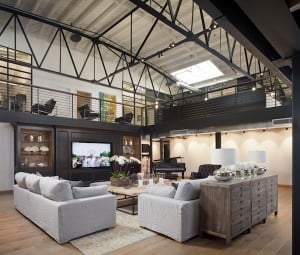 It’s the physical and emotional conditions of the work space environment that drives employee productivity. In fact, there’s evidence that shows a work environment that is actually “fun” is a good thing for organizations to have. An office environment that is homelike in ambience and equipped with recreational and leisure-time amenities increases enthusiasm, satisfaction, creativity, communications, and a strong sense of unity among employees. Policies that allow employees to design or help design their own workspaces, use the office’s conference room for other functions and to bring their dogs to work further integrate the employees’ work and personal lives. The results are fewer HR problems, a more focused commitment to the tasks at hand on the part of staffers who are comfortable – if not eager – to spend more time in their work environments.
It’s the physical and emotional conditions of the work space environment that drives employee productivity. In fact, there’s evidence that shows a work environment that is actually “fun” is a good thing for organizations to have. An office environment that is homelike in ambience and equipped with recreational and leisure-time amenities increases enthusiasm, satisfaction, creativity, communications, and a strong sense of unity among employees. Policies that allow employees to design or help design their own workspaces, use the office’s conference room for other functions and to bring their dogs to work further integrate the employees’ work and personal lives. The results are fewer HR problems, a more focused commitment to the tasks at hand on the part of staffers who are comfortable – if not eager – to spend more time in their work environments.
 Employees carrying major workloads need to be able to relax in different settings and think about their tasks and how to solve problems in order to be as productive as possible. They typically will leave the office during the workday to work out, eat, take a walk or otherwise relax away from their desks. Providing those and other amenities in their work place minimizes the distractions caused from employees having to go elsewhere and is yet another step in blending work and personal lives.
Employees carrying major workloads need to be able to relax in different settings and think about their tasks and how to solve problems in order to be as productive as possible. They typically will leave the office during the workday to work out, eat, take a walk or otherwise relax away from their desks. Providing those and other amenities in their work place minimizes the distractions caused from employees having to go elsewhere and is yet another step in blending work and personal lives.
Certainly, not all small employers can afford the square footage, much less the full range of recreation equipment, free meals, large TV screens and the like to create the optimum fun environment some companies have done in recent years. 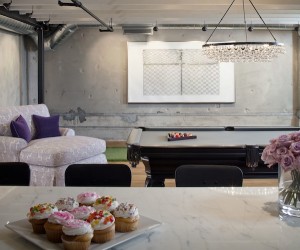 However, those employers who must increase worker productivity by getting more output from fewer hands need to look for ways to battle low morale – productivity’s chief foe.
However, those employers who must increase worker productivity by getting more output from fewer hands need to look for ways to battle low morale – productivity’s chief foe.
I dare to say there isn’t a space or company policy that cannot be enhanced in some way to incentivize employees to invest not only more time, but all their talents and energies into their work. Given the times and external competitive forces, the stakes are too high for managers not to do all within their means to motivate their employees by providing a fun and relaxing work environment.
After all, owning or operating a failing business is the least fun of all.
Jason Hughes is founder of Hughes Marino, an award-winning commercial real estate company with offices across the nation. A pioneer in the field of tenant representation, Jason has exclusively represented tenants and buyers for more than 30 years. Contact Jason at 1-844-662-6635 or jason@hughesmarino.com to learn more.


